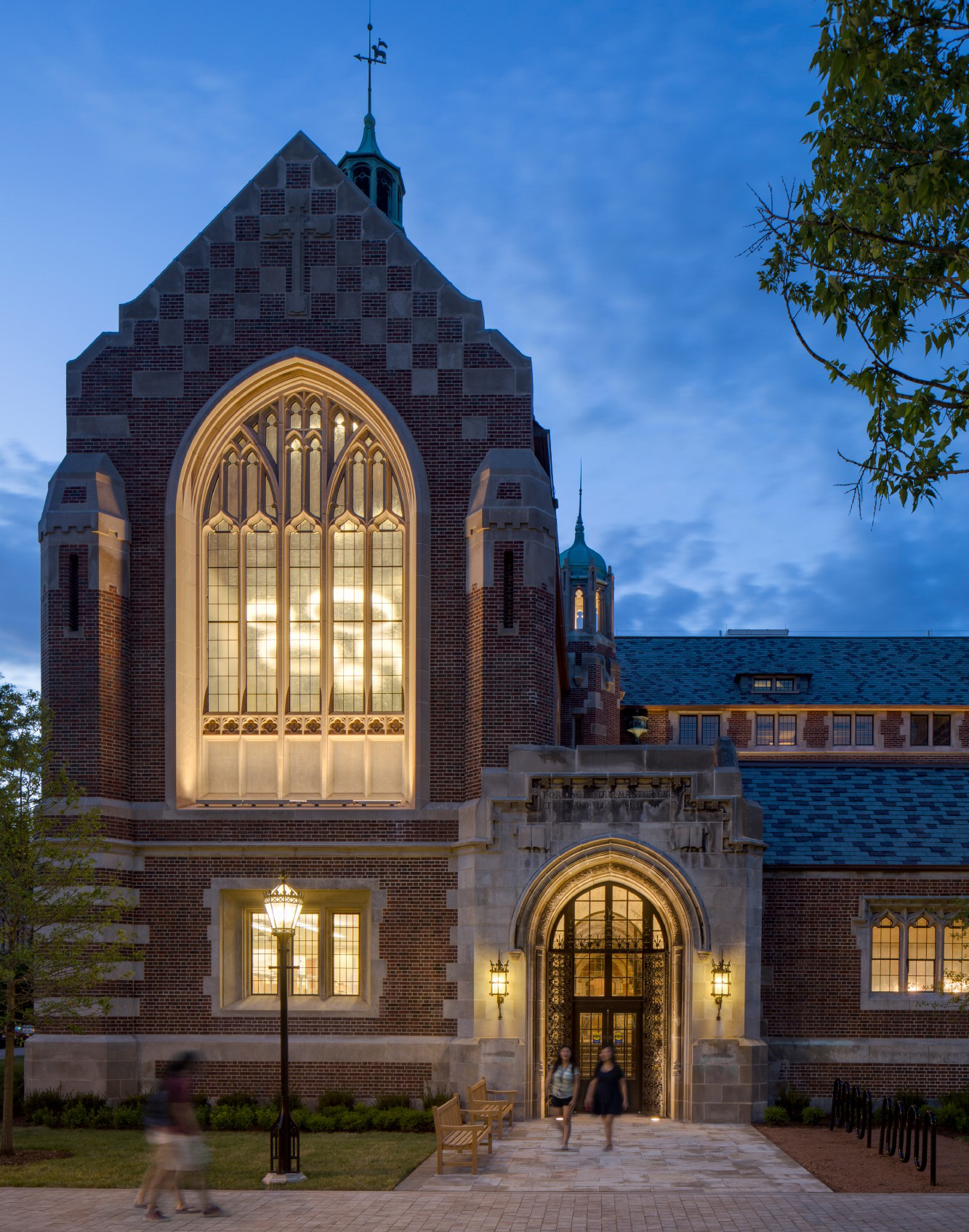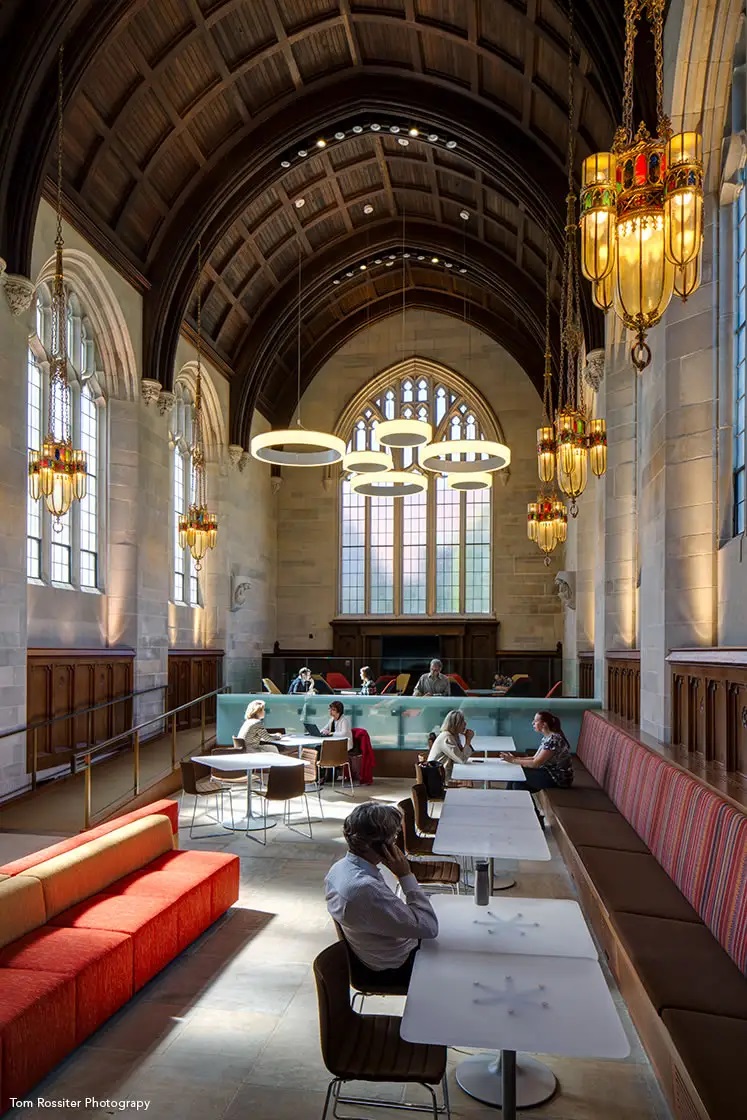
The University of Chicago’s Saieh Hall for Economics occupies a full city block and features adaptive reuse expertise from Hope’s Windows, which provided its handcrafted hot-rolled solid steel windows.
The first phase of the project transformed what had been the Chicago Theological Seminary—an iconic red-bricked structure built in 1928—into a 100,000-square-foot building that preserves the beauty and grandeur of the historic original while updating it with 21st-century features and efficiencies.
Historically appropriate, high-performance windows
 The project involved the replacement of 307 windows. These included the installation of Hope’s Jamestown175 Series 45-minute fire rated fixed windows and swing doors; Jamestown175 Series non-fire rated fixed windows and swing doors; and Landmark175 Series side hung-in casement ventilators with custom 1-3/4-inch frame sightlines to match existing windows.
The project involved the replacement of 307 windows. These included the installation of Hope’s Jamestown175 Series 45-minute fire rated fixed windows and swing doors; Jamestown175 Series non-fire rated fixed windows and swing doors; and Landmark175 Series side hung-in casement ventilators with custom 1-3/4-inch frame sightlines to match existing windows.
The strength of the steel window sections is ideal for projects requiring large glass lites and narrow sightlines.
“Hope’s windows improve building performance and maintain the historic character of the building,” says Katie Gerner, Associate, AIA, LEED AP, of Ann Beha Architects, based in Boston.
Achieving LEED Gold
The project started in 2010 with a preservation assessment to analyze the conditions of the building’s historic features, including the windows.
“A window mock-up was performed during the design phase of the project to test different treatment options for aesthetics, performance, technical feasibility and cost,” Gerner says.
The project’s Phase I achieved LEED Gold and has received positive reviews. The Chicago Tribune said, “The marriage of the old seminary and its new occupants seems like a match made in architecture heaven.”
The University of Chicago’s website describes the building this way: “The adapted site features a Gothic entryway, gardens and outdoor seating, as well as creative use of light and glass. The property now includes four buildings: the original 1928 Chicago Theological Seminary building, two landmark row houses…and a new piece of contemporary architecture to connect the buildings, integrating new and old.”
Saieh Hall incorporates 77,000 square feet of repurposed space and 23,000 square feet of expansion. The Phase I overall construction cost was $54 million.
The new hall is named in honor of one of the University’s trustees, Alvaro Saieh, in recognition of his significant donation for a new home for the Department of Economics and the Becker Friedman Institute for Research in Economics.

